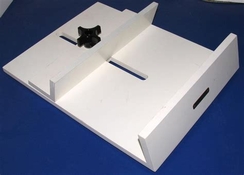Almost one year ago to the day I was trying different methods to get FB paper flat (RC has never been an issue). I still dry FB papers by hanging them at one corner w/ a clothes pin in the bathroom.
You know, it works really well, and the papers have a gentle curve towards the emulsion side w/ no wavy edges. The main thing is to let them dry as slowly as possible. When they're dry, they go under some books and come out flat as the RC papers a few days later.
You know, it works really well, and the papers have a gentle curve towards the emulsion side w/ no wavy edges. The main thing is to let them dry as slowly as possible. When they're dry, they go under some books and come out flat as the RC papers a few days later.





